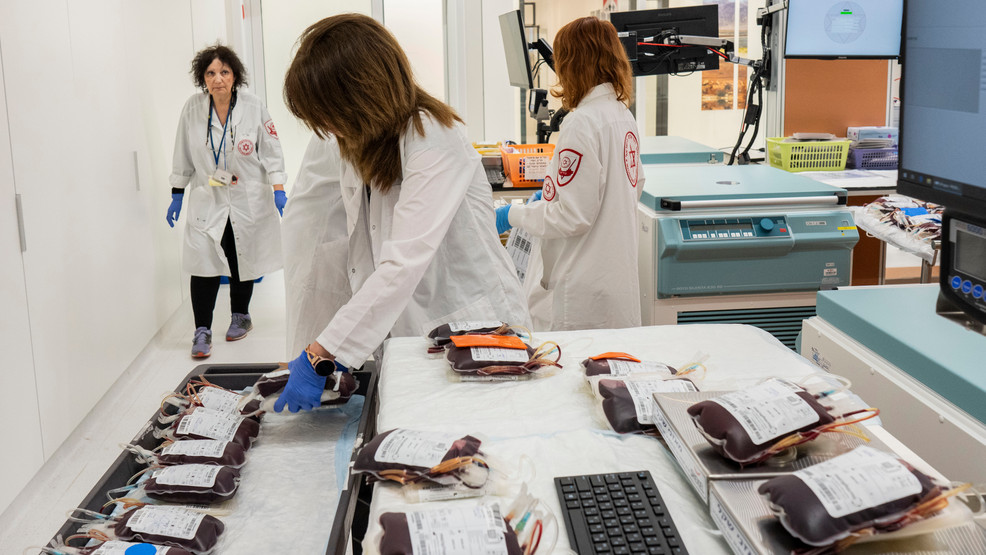Blood
Israel’s underground blood bank processes unprecedented amounts as troops move into Gaza
RAMLA, Israel (AP) — Hours after Hamas terrorists attacked southern Israel on Oct. 7, the country’s new fortified, subterranean blood bank kicked into action. Staffers moved equipment into the underground bunker and started saving lives.
The Marcus National Blood Services Center in Ramla, near Tel Aviv, had been scheduled to open within days, but with more than 1,400 people in Israel killed since the Hamas attacks — most killed during the initial attack — the timeline changed.
It became very clear we needed to move with the war plans because this was exactly the moment, the event it was built for,” said Dr. Eilat Shinar, director of the national blood services division of Magen David Adom — Israel’s medical emergency, disaster, ambulance and blood service.
Nestled some 15 meters (50 feet) underground at its lowest level, the $135-million, 6-story, state-of-the-art facility is protected from rockets, missiles, chemical attacks and earthquakes, ensuring blood processing can continue when it’s needed most.
Shiner said the center provided tens of thousands of units of blood in the days that followed the Hamas attacks.
We worked very hard to supply everything they needed,” she said. “We had many injured and we had to treat them.”
The former blood bank, which was built in the 1980s, was not able to handle the country’s needs in times of war, and had been exposed — but not damaged — during earlier conflicts, the center said. After Israel’s third war against Hamas in 2014, when rockets reached Tel Aviv and other major cities, discussions began about the need to create a more protected facility.
The new center has the capacity to store almost twice the amount of blood of its predecessor — half a million units a year compared with 270,000 — and has processed more blood than has ever been held in Israel’s reserves.
“There was a clear understanding that because rockets were flying close to the center any other place in the center can be targeted,” said Moshe Noyovich, the project engineer and representative in Israel for the American Friends of Magen David Adom, which primarily funded the new center.
In the past, each time rockets were fired into Israel, the team had to move the equipment into a bunker to continue working. Now they can operate uninterrupted, he said.
The new steel and concrete 51,000-square-meter (550,000-square-foot) building processes all of Israel’s donated blood. It has a a transportation center, a molecular lab, an air-filtration system allowing staff to continue working even in the event of chemical or biological warfare, and a 300-square-meter (3,200-square-foot) safe room shielded against the most severe missile threats, the center said.
Israel has vowed to crush Hamas in Gaza. Hamas, an Islamic militant group, has called for the destruction of Israel. And as Israeli troops advance deeper into the Gaza Strip, the center is preparing for a potential surge of casualties that might need transfusions.
Since the war began, thousands of people have stood in line for hours to donate blood. In early October, the center received 5,000 units of blood in one day — five times more than usual, said its staff. The ideal blood donors are those with Type O, which can be given safely to anyone and can help people more quickly.
Once blood is donated, it’s transferred to the hospitals and given directly to the Israeli military to treat wounded soldiers on the battlefield.
“During war, blood is part of the resuscitation process and the idea is to have a stock, to be able to give blood as soon as it’s needed,” said Guillemette Thomas, the medical coordinator for Doctors Without Borders.

